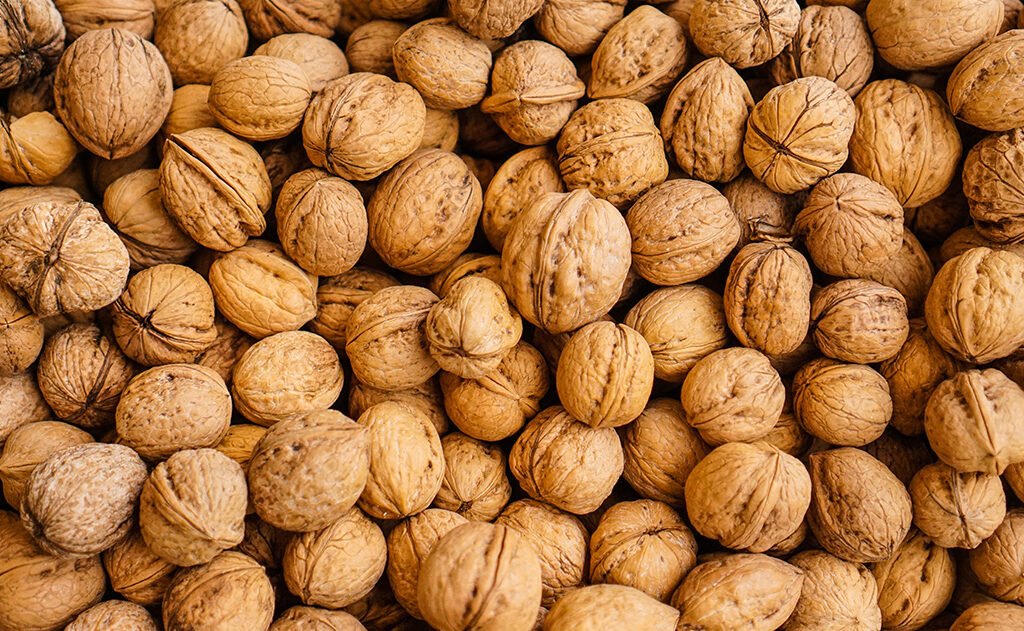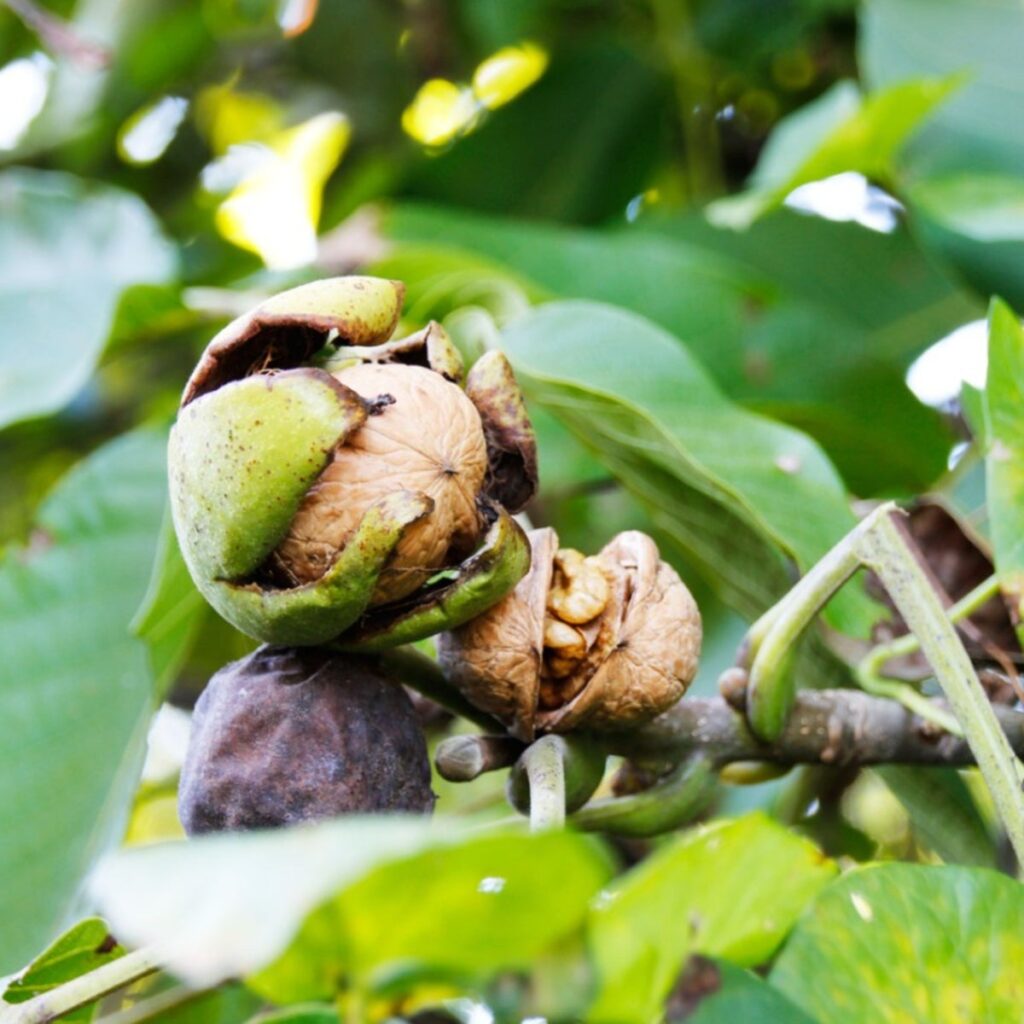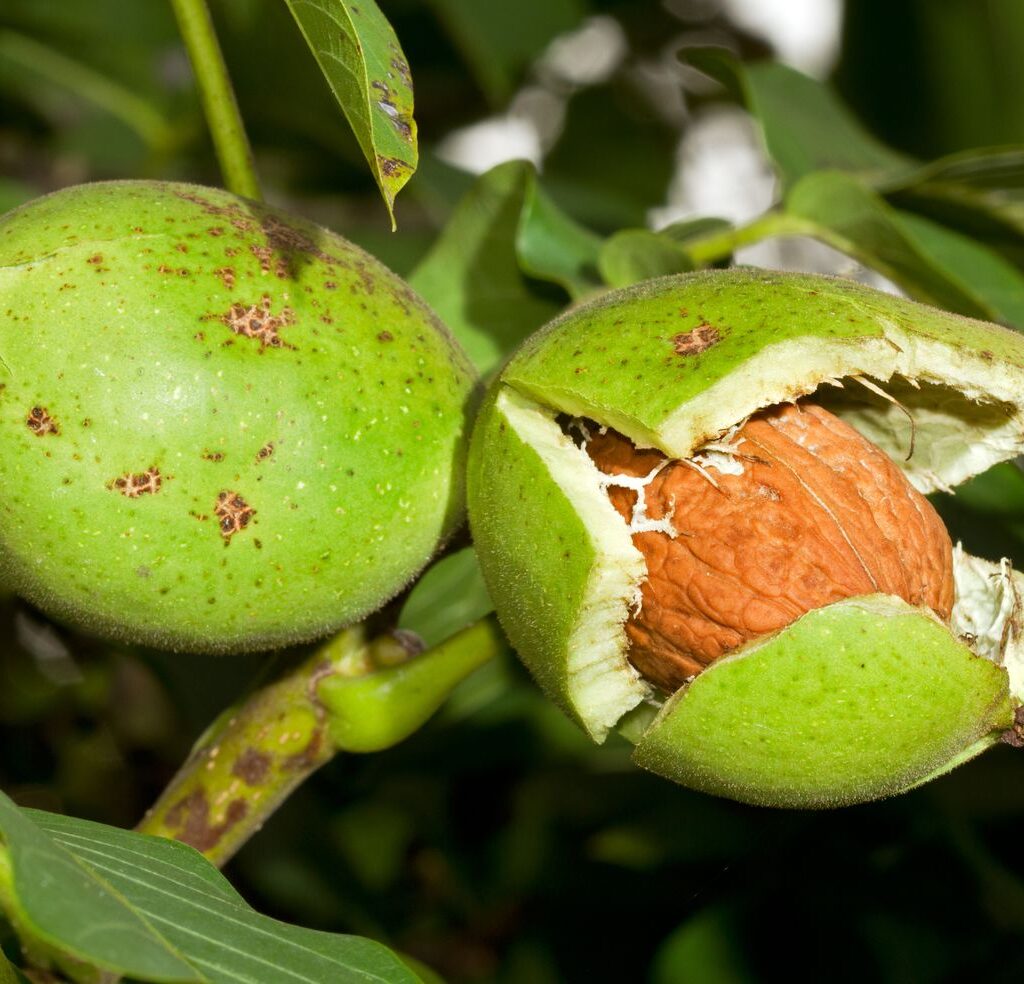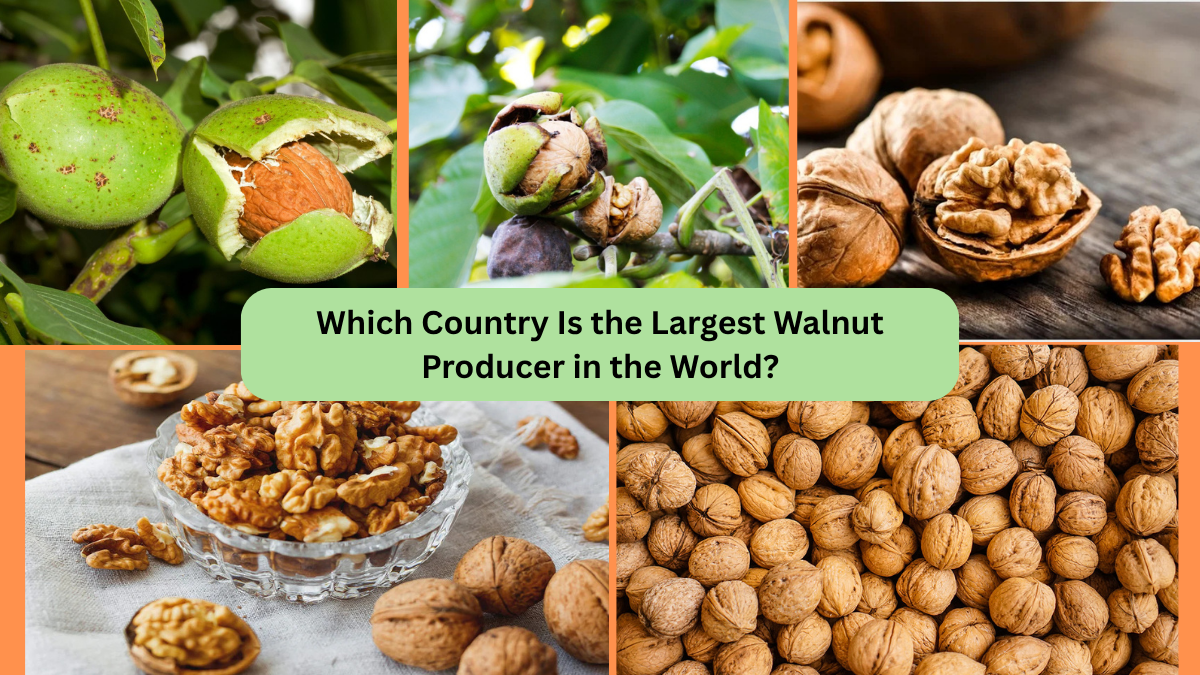Walnuts—renowned for their buttery flavor, health benefits, and culinary versatility—are cultivated across diverse climates worldwide. But one country stands head and shoulders above all others in production. Let’s crack open the data and discover which nation leads the world in walnut production, why it dominates, and what this means for the global market.
China: The Walnut King

Leading by a wide margin, China dominates the global walnut scene.
- Production volume: Approximately 1.4–1.5 million metric tons of in-shell walnuts per year fas.usda.gov+1currentaffairs.adda247.com+1, which translates to roughly 56–57 % of global output fas.usda.gov.
- Historical dominance: As of 2016/17, China already produced over 1.06 million tons, accounting for ~50 % of world output worldatlas.com. Recent growth continues; in 2023, production was about 1.1 million tons, and forecasts for 2024/25 estimate 1.5 million tons—a testament to rapid expansion fas.usda.gov.
- Production increase: A recent report highlights China’s overall output rising approximately +4 % year-over-year .
Why China Leads
- Ideal geography & climate
Regions such as Shaanxi, Hebei, and Xinjiang provide long, warm summers and well‑drained soils ideal for English walnut (Juglans regia) trees theworldranking.com+10worldpopulationreview.com+10en.wikipedia.org+10. - Investment & modernization
Robust infrastructure, government subsidies, and investment in precision agriculture, irrigation systems, and mechanization have significantly boosted yield efficiency sweetishhill.com+3currentaffairs.adda247.com+3en.wikipedia.org+3. - Domestic demand
Exploding per capita consumption—rising from 0.17 kg (1995) to 1.8 kg (2016)—fuels domestic market expansion alongside export potential worldatlas.com. - Export dynamics
While China consumes most of its walnut output domestically, it’s also increasing exports to markets like the UAE and Kyrgyzstan worldpopulationreview.com+3currentaffairs.adda247.com+3worldunfolds.com+3.
Thanks to this strategic synergy, China stands firmly as the world’s largest walnut producer.
United States: A Strong Second in California
The United States ranks second in global walnut production—anchored by California, which contributes nearly 100 % of U.S. output.
- Annual output: Around 607,000–689,000 metric tons, making up ~13–23 % of global production reportlinker.com+3worldpopulationreview.com+3bootstrapbee.com+3.
- Marketing year 2024/25 estimate: 607,814 tons (~23 % global) worldatlas.com+2fas.usda.gov+2fas.usda.gov+2.
California: The Walnut Powerhouse
- Native & cultivated: Home to the English walnut (Juglans regia) variety, introduced in the 1770s by Franciscan Fathers fas.usda.gov+5en.wikipedia.org+5en.wikipedia.org+5.
- Major acreage: By 2018, California had over 335,000 acres of walnut orchards, producing $1.6 billion worth en.wikipedia.org+1en.wikipedia.org+1.
- Yield per acre: Increased from 1.50 tons/acre (2007) to 1.87 tons/acre (2017) en.wikipedia.org.
- Export emphasis: California walnuts are heavily exported to the EU, Japan, South Korea, and others; in 2017 alone, exports totaled $1.37 billion .
However, challenges—like frosts, heat waves, and irrigation needs—have impacted recent yields. The U.S. walnut crop fell ~19 % in 2024/25 due to adverse weather, although stocks and exports rebounded slightly .
Other Key Walnut Producers

Although China and the U.S. dominate (~70 % combined output), other countries make important contributions:
| Rank | Country | Production (~2023‑24) |
|---|---|---|
| 3 | Iran | ~387,000 t (~6–7%) sweetishhill.com |
| 4 | Turkey | ~325,000 t (~2%) |
| 5 | Chile | ~195,000 t (7–3%) |
| 6 | Ukraine | ~115,000 t (~2.7%) |
| 7 | Mexico | ~136,000 t (3.8%) |
| 8 | Romania | ~54,000 t |
| 9 | France, Greece, Uzbekistan, etc. | 25,000–62,000 t range |
These countries benefit from favorable climates, heritage varieties, and, in some cases, government support. Iran—renowned for Persian walnuts from Kerman and Zanjan—ranks high due to efficient cultivation worldpopulationreview.com.
Global Walnut Production: Scope & Growth Trends
- Total global output has climbed to around 2.7 million metric tons (marketing year 2024/25) bootstrapbee.com+7fas.usda.gov+7fas.usda.gov+7.
- Ten-year growth: An average of ~3 % CAGR since 2015 (~2.29 million in 2015 to 2.69 million in 2024) fas.usda.gov.
- Leading share: In 2023, China contributed 57.7 %, the U.S. 13.0 %, Iran 6.7 %, with Mexico, Chile, and Ukraine each around 3 % reportlinker.com.
The rapid increase in China and Chile suggests expanding capacity in non-traditional growing zones en.socportal.info+6reportlinker.com+6worldpopulationreview.com+6.
Why Production Varies: Key Factors

Walnut yields depend on a complex web of factors:
- Climate & soil
Trees thrive in long summers, well-drained soils, and cold winters for dormancy. Regions lacking these may see lower yields atlasbig.com+15worldatlas.com+15worldpopulationreview.com+15. - Water & irrigation
In arid zones, like California or Iran, sufficient irrigation is crucial. Droughts or water restrictions can severely limit output . - Orchard management
Techniques such as pruning, disease control, and beekeeping for pollination are essential for high yield . - Economic policy & subsidies
Many governments (China, Iran, Turkey) support walnut farmers through aid and research, pushing productivity worldatlas.com+11worldpopulationreview.com+11bootstrapbee.com+11. - Technological adoption
Precision agriculture, new cultivars, mechanized harvesting, and pest management enhance output and quality—especially in China and California . - Climate change
Rising temperatures, erratic rainfall, and extreme events are beginning to reduce yields in vulnerable regions .
What This Means for the Walnut Market
The global walnut industry is evolving rapidly:
- Market concentration: With over 65 % of production from just two countries, global supply can be sensitive to regional shocks.
- Export trends: The U.S. (especially California) remains a top exporter by value; China is becoming both a major producer and exporter en.socportal.info+1worldpopulationreview.com+1.
- Supply vs. demand: Global demand is steadily growing, projected to increase from ~1.09 million tons in 2024 to ~1.58 million by 2034 at ~3.8 % CAGR expertmarketresearch.com.
- New producers emerging: Chile, Mexico, Uzbekistan, and parts of Eastern Europe are expanding walnut farming into new regions .
- Sustainability & adaptation: As climate pressures intensify, research into drought-resistant cultivars, sustainable water usage, and resilient practices will be paramount .
Final Verdict

- China holds the crown as the largest walnut producer, with ~1.4–1.5 million tons annually (~56–57 % of global output).
- The United States, primarily California, is a strong second, at ~600–690 thousand tons (~13–23 %).
- Following them, Iran, Turkey, Chile, Ukraine, and Mexico round out the top tier, each producing hundreds of thousands of tons.
This landscape reflects how terrain, climate, infrastructure, and policy converge to shape global crop output.
The Road Ahead
- Projected growth: With consumption rising globally, production capacity is predicted to expand—particularly in China, Chile, and emerging areas .
- Climate adaptation: Research into resilient cultivars and farming methods to counter droughts, heat, and disease is critical .
- Value addition: Walnuts are finding uses beyond snacking—from oils and bakery ingredients to health supplements, increasing market value .
- Trade dynamics: Tariffs, trade deals, and export embargoes will continue shaping which countries supply major markets .
Conclusion

China is undeniably the world’s largest walnut producer, contributing around 1.4 to 1.5 million metric tons annually—or about 56–57 % of total global production. Its success is built on favorable growing conditions, large-scale investment, and booming domestic demand. The United States remains a significant second, fueled by California’s efficient and high-value walnut industry. Meanwhile, nations like Iran, Turkey, Chile, and Ukraine support a growing, diversified global supply network.
With rising demand and emerging challenges from climate change and market dynamics, the future of walnut production promises to be exciting and transformative. As the world remains nut-hungry, efforts to balance growth with sustainability and innovation will define the next generation of global walnut farming.




